How to Pack for a Move
Packing up and moving isn’t easy. Here are some tips and tricks that will help you pack like a pro—so less goes wrong on moving day.

Packing up and moving isn’t easy. Here are some tips and tricks that will help you pack like a pro—so less goes wrong on moving day.

Figuring out how to pack for a move can be overwhelming, especially when it means potentially putting your valuables at risk. Learning how to pack effectively can make the moving process smoother and protect your belongings.
Let’s dive into some tips and tricks on how to pack for a move room by room, so you can go into your moving process with confidence.
Before starting the moving process, it’s crucial to prepare in advance to alleviate any last-minute anxiety. Preparing for a move can be overwhelming, but staying organized will help you manage all the tasks with ease.
Using a moving checklist is a great way to keep track of your to-dos and the timing of each task leading up to moving day. Click below to learn more about how to stay organized and ensure a smooth move!
When to do it: Begin decluttering 6-8 weeks before the move.
Once you’ve gathered all your packing supplies, it’s time to tackle decluttering. Start by sorting through your belongings and deciding which items are truly essential for your new home.
Deciding what you actually want or need to lug with you to your new home can be incredibly helpful. “Streamline, toss and donate any unwanted items—anything you really don’t need, in essence any ‘future trash,'” counsels Nancy Zafrani, general manager at Oz Moving & Storage in New York.
To decide whether to keep or part with items, ask yourself if you’ve used them in the past year or if they hold significant sentimental value. Ensure that your new home has enough space for the items you plan to bring with you. If something probably won’t fit, you may need to part ways with it.
For items you won’t keep, consider selling them through platforms like Facebook Marketplace or Craigslist, or donating to local charities. For unique or high-value items, consignment shops or specialty online marketplaces can be great options. Additionally, hosting a garage sale can help you declutter while making a bit of extra cash.
When to get the packing materials? About 4 weeks before the move.
Creating a list of essential packing materials and having them ready might seem like a small step, but it will come in handy when starting the packing process.
Here are some packing materials to consider stocking up on pre-move:
As a general rule of thumb, estimate the amount of packing materials you’ll need based on the size of your home and the number of items you’re moving. For instance, a one-bedroom apartment might require around 20-30 small boxes and 10-15 large boxes.
Budget for packing tape and bubble wrap based on your number of boxes. A roll of tape generally covers 10-15 boxes, and a roll of bubble wrap can protect approximately 50-100 items. It’s smart to have a little extra on hand to avoid last-minute trips to the store.
When to start packing your essentials: Start packing them 1-2 weeks before the move.
You’ll want to make sure all the things you’ll need during the first few (hectic) days at your new place are easily accessible. Pack a suitcase full of essentials, you won’t have to unpack 10 boxes in order to track down your toothbrush. Make sure to keep this suitcase easily accessible and don’t let the movers take it when they start packing.
Piece of Cake Moving recommends including the following:
Additionally, gather all important documents or any other highly valuable belongings, and pack them together in a small box to keep them safe before the moving process starts. Keep this box with you during the move.
When it comes to the items that are most valuable to you, don’t rely on others. Even if you have arranged some moving insurance, it most likely won’t cover high-value items.
Things can change quickly during the moving process, so it’s important to stay flexible. However, keeping your packing organized will make everything run more smoothly.
To maintain organization, label each box with its corresponding room and a brief description of its contents. This will help you easily locate items when you start to unpack in your new home and make it easier to identify if anything goes missing.
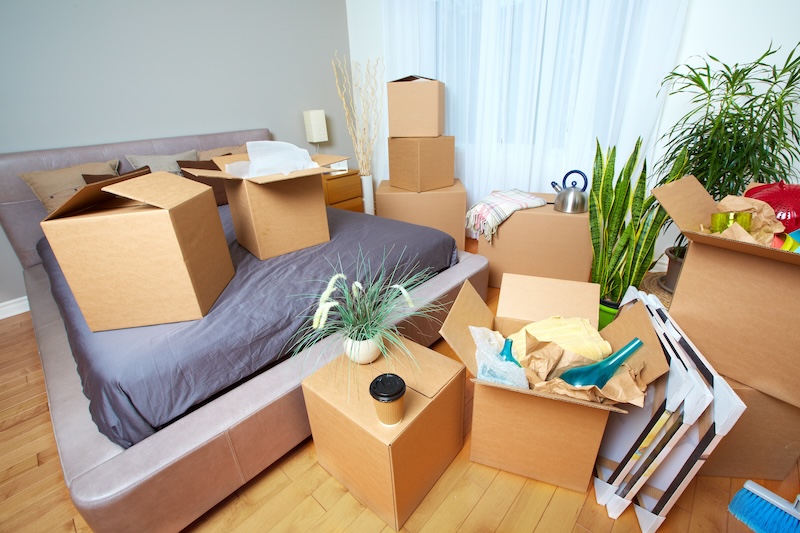
One of the first things to consider when deciding how to pack for a move is which room to start with. It’s recommended to begin by packing each family member’s or roommate’s personal items in their respective bedrooms because this allows you to get personal belongings out of the way, freeing up your time and focus to tackle common areas later. If you live alone, start with your own bedroom to streamline the process.
Begin with off-season items like clothing and linens, using vacuum-sealed bags to maximize space. It’s also helpful to keep all clothes on hangers; simply place the hanging clothes in wardrobe boxes or garment bags, so when you move into your new place, you can easily rehang them without any hassle.
For additional clothing, utilize suitcases and overnight bags to save moving boxes for other items. Leave daily wear items and bedding for last-minute packing. Don’t forget to use a mattress bag or some form of protection around the mattresses to prevent them from getting dirty or damaged during the move.
When it comes to fragile items like lamps or decorations, wrap them in bubble wrap or packing paper and place them in sturdy boxes. Clearly label all boxes to streamline unpacking, keeping similar items together—clothing in one box, decorations in another, and so on.
If you’re using a moving company, the movers can often disassemble larger furniture for you and load it onto the truck, making the process much easier. Removing dresser drawers and placing them to the side can also be helpful, whether you or professional movers are handling the larger bedroom furniture.
By tackling personal items first and staying organized, you’ll make the transition smoother and more efficient. This approach also allows everyone to come together and pack items in the common areas without worrying about the bedrooms.
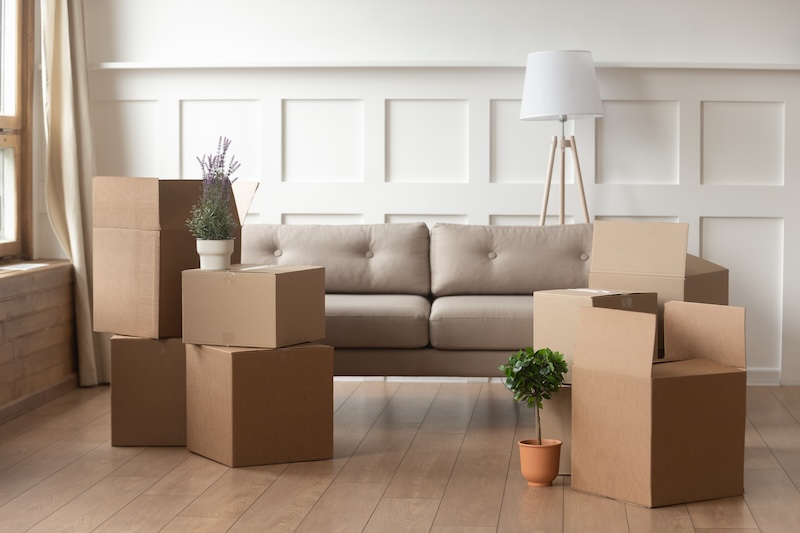
Start by packing small items such as books, decor, and small electronics. Carefully wrap fragile items like picture frames, vases, and glassware in bubble wrap or packing paper, and consider using dividers for extra protection. You can also place any extra sheets at the bottom of the box to try to keep the items secure.
For electronics, remove batteries to prevent leaks and label cords and remote controls in plastic bags or containers to avoid confusion.
Use sturdy boxes for heavy items like lamps and TV stands, and fill any empty spaces with packing paper or bubble wrap to prevent shifting. To save space, consider disassembling larger furniture if possible and keep small parts like screws and bolts in labeled bags.
If you have area rugs in the living room, roll them up and pack them last in the moving truck, so they will be the first items unpacked at your new place. Before rolling them up, it’s a good idea to give the rugs a thorough cleaning. This way, they’ll be fresh and ready to go when you set them up in your new home.
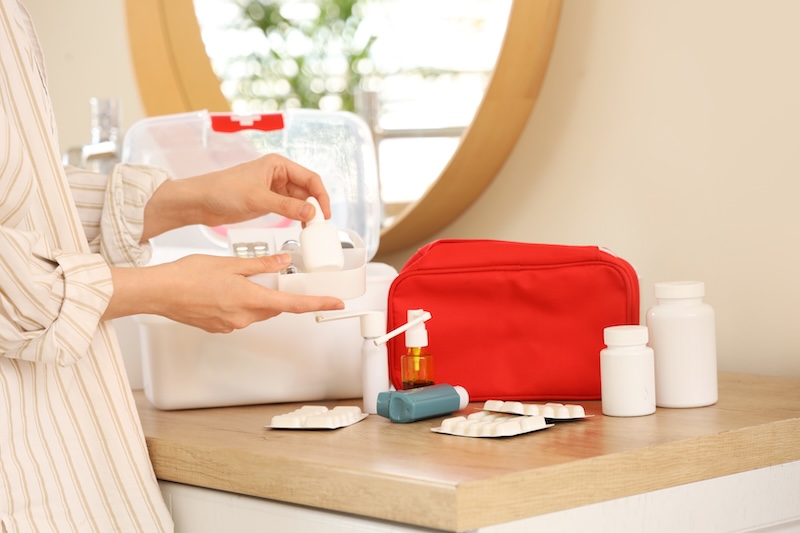
Pack toiletries in clear, resealable bags to prevent spills and leaks, and consider using small containers for items like lotions and shampoos to minimize mess.
Pack towels and other linens separately, and use sturdy boxes to avoid overloading. Additionally, to save space you can wrap fragile items in your linens to keep them from breaking. For medicines and first-aid supplies, keep them in a clearly labeled container that’s easily accessible during the move.
If you have any items that could be damaged by moisture, pack them with extra care. Consider packing a small bag or box with essential bathroom items such as toilet paper, soap, and personal hygiene products so that you have everything you need right away in your new place.
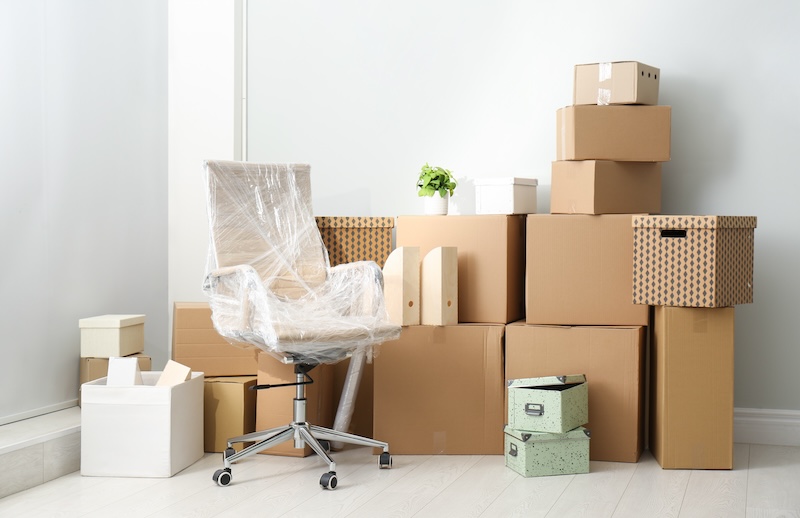
Start by packing non-essential office items like old files, excess stationery, and office supplies. Organize and pack these items in small boxes, labeling each box with its contents for easy identification.
Carefully pack electronics such as computers, printers, and peripheral devices. If you still have the original boxes for these items, use them; otherwise, wrap them securely in packing material and place them in large boxes.
Remove ink cartridges from printers to prevent leaks, and label all cords and accessories to keep them organized. For books and documents, use small to medium-sized boxes to prevent them from becoming too heavy and potentially damaging.
Disassemble large furniture items like desks or bookshelves if possible, and keep screws and small parts in labeled bags.
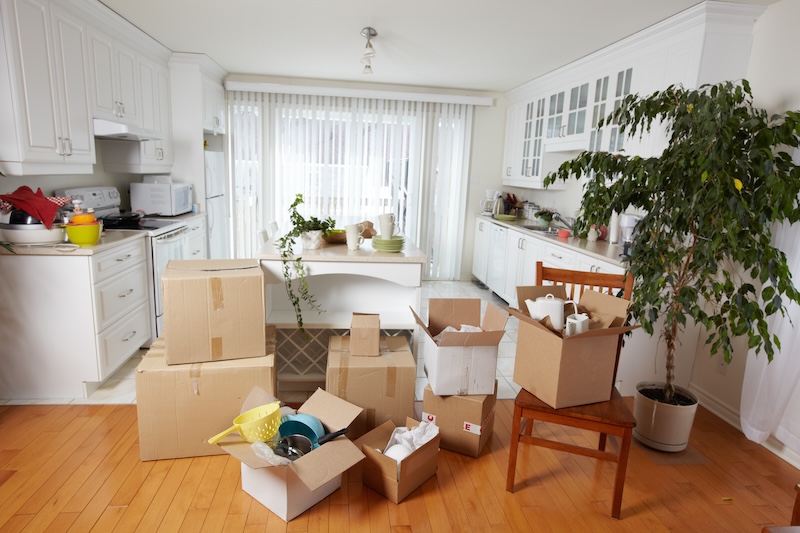
When it comes to packing the kitchen, it’s best to tackle this task last. Leave food items in the fridge and freezer as long as possible, and aim to consume or dispose of perishables before the move. The approach to packing can vary depending on the distance of your move.
For local moves, you might be able to bring some items from the freezer if they’re still frozen and you have a plan for keeping them cold during transit. However, for longer moves, it’s often advisable to discard most items from both the fridge and freezer to avoid spoilage.
Pack non-essential items first, such as small appliances, extra cookware, and seldom-used utensils.
Pro-tip on packing dishware from the site of NYC-based Rabbit Movers: Stack your dishes vertically instead of horizontally, as they are less likely to break this way. Wrap each plate individually, then create a bundle of 4 to 5 plates—and wrap again.
For silverware and smaller kitchen gadgets, group them together in clearly labeled boxes. When packing food items, ensure that perishable goods are consumed or disposed of in advance. For appliances, wrap them securely and remove any detachable parts to prevent damage.
Keep a separate box for kitchen essentials, including pots, pans, and utensils you’ll need up until your last days at your old place and right away at your new one. Additionally, consider using color-coded labels for your boxes to easily identify kitchen items when unpacking.
Now that you’re ready to master the art of packing for a move, it’s important to ensure your belongings are protected throughout the process and at your new home. Accidents and unexpected events can happen at any time, so having homeowners insurance can provide peace of mind and financial security for your possessions.
By securing a policy, you can safeguard your stuff against potential damage, loss, or theft, ensuring that your items are covered every step of the way. Don’t leave your belongings unprotected— click below to get a free quote.
A few quick words, because we <3 our lawyers: This post is general in nature, and any statement in it doesn’t alter the terms, conditions, exclusions, or limitations of the policies issued, which differ according to your state of residence. You’re encouraged to discuss your specific circumstances with your own professional advisors. The purpose of this post is merely to provide you with info and insights you can use to make such discussions more productive! Naturally, all comments by, or references to, third parties represent their own views, and Lemonade assumes no responsibility for them. Coverage may not be available in all states. Please note that statements about coverages, policy management, claims processes, Giveback, and customer support apply to policies underwritten by Lemonade Insurance Company or Metromile Insurance Company, a Lemonade company, sold by Lemonade Insurance Agency, LLC. The statements do not apply to policies underwritten by other carriers.
Please note: Lemonade articles and other editorial content are meant for educational purposes only, and should not be relied upon instead of professional legal, insurance or financial advice. The content of these educational articles does not alter the terms, conditions, exclusions, or limitations of policies issued by Lemonade, which differ according to your state of residence. While we regularly review previously published content to ensure it is accurate and up-to-date, there may be instances in which legal conditions or policy details have changed since publication. Any hypothetical examples used in Lemonade editorial content are purely expositional. Hypothetical examples do not alter or bind Lemonade to any application of your insurance policy to the particular facts and circumstances of any actual claim.